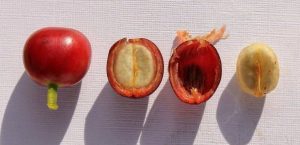A Guide to the Common Cold and Flu

Despite great advances in medicine, the common cold continues to affect us. The winter months are usually considered prime time for colds, but is this really the case? We’ll explore some of the myths of the common cold and how we can reduce our risk of catching one.
Common colds are usually short lived, lasting a few days, with a few lingering symptoms lasting longer, especially cough. Symptoms peak within 1–3 days and generally clear by 1 week, although a cough often persists.
The Statistics
- On average, adults get 2-5 colds a year and schoolchildren can get 7-10 colds a year
- Upper respiratory tract illnesses are the 3rd most common reason for visiting a doctor
- The common cold is the reason for many absences from work, school and daycare
There is no cure for the common cold
- Diversity of the viral cause of the common cold makes treatment difficult
- Efforts to develop a vaccine against the common cold has been unsuccessful. Common colds are produced by large variety of rapidly mutating viruses – successful creation of a broadly effective vaccine is highly improbable.
Learn More: Flu Season is Just Around the Corner
What is the difference between the common cold and flu?
- Common colds are usually caused by a group of viruses called ‘rhinoviruses’
- Influenza is a caused by a different group of viruses
- In general the flu is worse than the common cold, and symptoms such as fever, body aches, extreme tiredness, and dry cough are more common and intense
- Influenza involves the lungs, whereas the common cold does not
- However, the symptoms of mild influenza are often indistinguishable from the common cold
- BTW: ‘Man ‘flu’ is not a diagnosable illness – defined as men with a cold claiming they have the flu
Why is winter the season for colds… or is it?
- We don’t have indisputable evidence that winter is “cold season.”
- The incidence of rhinovirus infections peak during autumn, with a smaller outbreak in spring
- The influenza pandemic of 1918-19, which killed at least 20 million people worldwide, reached peak virulence in most of the world during the late spring and summer
- The view that resistance to infection is lower by ‘chilling’ in cold conditions is not supported by experimental work
- Isolated communities in cold climates may be completely free from colds and upper respiratory tract infections for the whole winter, but epidemics occur when first contact is made with visitors
- People who spend the winter at research stations in the Antarctic seldom get colds except when they host germ-laden visitors

PREVENTION IS BEST
- Not touching the nose, eyes, or mouth with potentially contaminated fingers can reduce transmission of the virus through direct contact. Transmission of common cold infection is mostly through hand-to-hand contact, with subsequent passage to the nostrils or eyes.
- Because the common cold is caused by a virus instead of a bacterium, anti-bacterial soaps and gels are no better than regular soap for removing the virus from skin or other surfaces.
- Handwashing & maintaining good health for immunity (healthy diet & regular activity)
Recent research shows that consuming foods rich in flavonoids provides us with protection against catching a cold
- Australian research has shown that eating foods rich in flavonoids provides up to 33% protection from the common cold
- Flavonoids are found in lots of fruit and vegetables, including green tea, apples, blueberries, cocoa, red wine and onions
- People who eat flavonoids have fewer sick days and are more likely to stave off infections
- Flavonoids are believed to have anti-viral, anti-inflammatory and antioxidant properties, so can help reduce the incidence of coughs and colds and boost immune function
- Eating five serves of veggies and two serves of fruit each day in a variety of colours will put you well on the path to getting enough flavonoids
What about Vitamin C and Echinacea? Can they help reduce the duration and severity of a cold?
- Despite the widespread use of vitamin C, research has shown that they do not reduce the duration or severity of the common cold.
- Some echinacea supplements may shorten the duration of a cold by about half a day and may slightly reduce symptom severity. But the research results have been too minor to be significant.
- In the past, some studies have found echinacea to be helpful while other studies have found no benefit. Part of the problem is that echinacea products can contain different concentrations of the herb, and the echinacea extracts used in these products can come from the flowers, stems or roots of three different echinacea plant species. This makes it difficult to compare study results.
- Some people might get back-to-back colds but it isn’t likely that people will be reinfected with the same virus because the body builds some immunity to it. But people can pick up another of the more than 200 known viruses that cause the common cold, some of which are worse than others.
- 20-30% of colds remain without a proven viral cause.
- Psychological (as opposed to physical) stress may also play a role. A study published last year in the New England Journal of Medicine reported that the more psychological stress people were under, the more likely they were to get colds.
Neck pain
How common is neck pain? Research estimates between 25% and 70% of us will experience neck pain at ...
What is Irritable Bowel Syndrome (IBS), and how can a dietitian help?
Irritable Bowel Syndrome (IBS) is characterised by gastrointestinal symptoms and is only diagnosed after the exclusion of other ...
Meet Jess our new physiotherapist
New Physio Jess Describe your role in one sentence. In the clinic, I get the opportunity to empower ...
Ethos Health C-fit classes
Did you know the right prescription of exercise supports better treatment outcomes and fewer side effects during treatment ...
What you need to know about coffee and Health
Coffee. Morning Brown. Many of us love it. Some of us fear it. It’s one of the mostly ...
The impacts of poor body image and how a dietitian can help
Dietitians Jane (left) and Scarlett (right) What is body image? Body image is a combination of the thoughts ...






